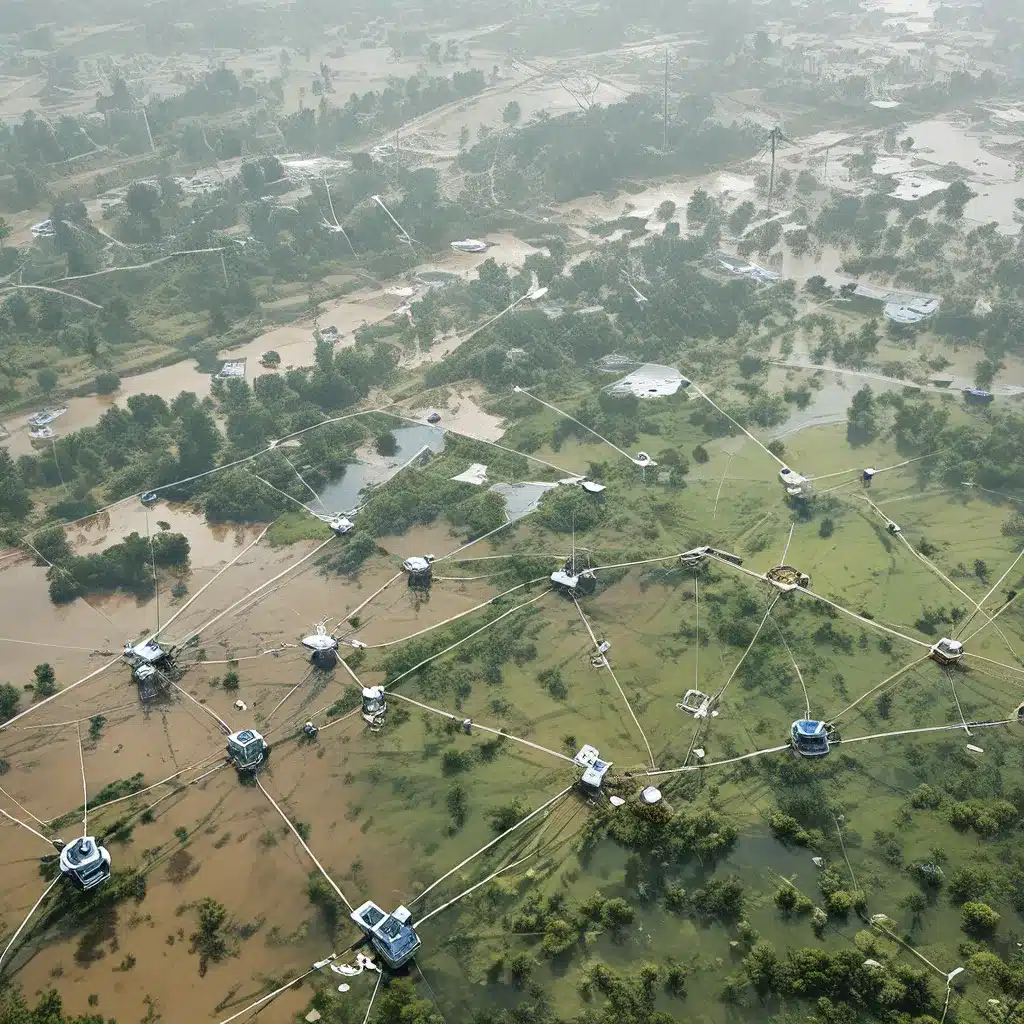
The Rise of Sensor Networks in Climate Change Mitigation and Adaptation
Sensor networks have emerged as a crucial technology in the fight against climate change, offering unprecedented capabilities for monitoring, analyzing, and adapting to the impacts of a changing climate. These interconnected arrays of sensors, often coupled with Internet of Things (IoT) technologies, are transforming the way we understand and respond to the challenges posed by a warming planet.
At the heart of this technological revolution are the remote sensing techniques that enable the collection of vast amounts of data from satellite, aircraft, and ground-based sensors. These remote sensing methods, combined with advanced geographic information systems (GIS) and data analytics, provide a powerful toolkit for climate scientists, policymakers, and urban planners to track and mitigate the effects of climate change.
Sensor Networks for Climate Monitoring
One of the primary applications of sensor networks in the context of climate change is the monitoring and assessment of environmental parameters. Satellite-based remote sensing technologies, such as those employed in the European Union’s Copernicus program and the Global Earth Observation System of Systems (GEOSS), allow for the continuous, large-scale observation of key indicators like temperature, precipitation, sea level, vegetation, and ice cover.
By leveraging these remote sensing capabilities, sensor networks can provide high-resolution, real-time data on the state of the climate system, enabling researchers and policymakers to track long-term trends and detect early warning signs of climate-related disasters, such as droughts, floods, and wildfires.
Moreover, the integration of in-situ sensors, strategically placed in vulnerable or inaccessible areas, can complement the satellite data and provide a more comprehensive understanding of local climate dynamics. These ground-based sensor networks can monitor factors like soil moisture, air quality, and water resources, offering valuable insights into the impacts of climate change on ecosystems and human communities.
Sensor Networks for Climate Adaptation
Beyond monitoring, sensor networks play a crucial role in climate change adaptation by informing decision-making processes and supporting the implementation of resilience strategies.
Remote sensing data and GIS-based decision support systems can help urban planners and disaster risk managers identify vulnerable areas, model climate-related risks, and develop effective adaptation plans. For instance, satellite imagery can be used to monitor changes in land cover, water resources, and forest health, enabling policymakers to make informed decisions about sustainable land management and resource conservation.
Furthermore, sensor networks can be employed in early warning systems to predict and mitigate the impact of climate-related disasters. Integrated sensor platforms, combining meteorological data, remote sensing, and GIS, can provide accurate forecasts and real-time monitoring of extreme weather events, allowing emergency responders to prepare and coordinate more effective disaster relief efforts.
Securing Sensor Networks for Climate Resilience
As sensor networks become increasingly integral to climate change monitoring and adaptation, the issue of cybersecurity has emerged as a critical concern. Sensor networks are vulnerable to a range of cyber threats, including data breaches, network disruptions, and malicious attacks, which can compromise the integrity and reliability of the data they collect.
To address these security challenges, researchers and technology providers are exploring various encryption techniques, access control protocols, and anomaly detection algorithms to safeguard sensor networks and ensure the confidentiality, availability, and integrity of climate-related data.
One promising approach is the use of blockchain technology to secure sensor data and enable trusted data sharing among stakeholders. By leveraging the decentralized, tamper-resistant nature of blockchain, sensor networks can authenticate data sources, validate sensor readings, and facilitate transparent data exchange for climate adaptation and mitigation efforts.
Enhancing Energy Efficiency in Sensor Networks
Another critical aspect of sensor network design for climate resilience is energy management. Sensor nodes, often deployed in remote or inaccessible areas, require efficient power systems to operate continuously and transmit data reliably.
Researchers are exploring various energy-efficient strategies, such as low-power sensor designs, energy harvesting from renewable sources, and dynamic power management algorithms, to extend the lifetime and sustainability of sensor networks in climate monitoring and adaptation applications.
Innovative approaches, such as leveraging the Experimental Program to Stimulate Competitive Research (EPSCoR), are also being employed to develop energy-efficient sensor technologies and enable the widespread deployment of sensor networks for climate resilience.
The Future of Sensor Networks in Climate Resilience
As the impacts of climate change continue to intensify, the role of sensor networks in monitoring, adaptation, and mitigation efforts will only become more critical. The advancements in remote sensing, IoT, and data analytics are poised to transform the way we understand and respond to the challenges posed by a changing climate.
Sensor-networks.org is at the forefront of this technological revolution, providing a platform for researchers, policymakers, and industry leaders to collaborate, share knowledge, and drive the development of innovative sensor network solutions for climate resilience.
Through the integration of satellite data, ground-based sensors, and advanced analytics, sensor networks will continue to enhance our understanding of climate-related processes, support the implementation of effective adaptation strategies, and contribute to the creation of a more resilient, sustainable future for our planet**.